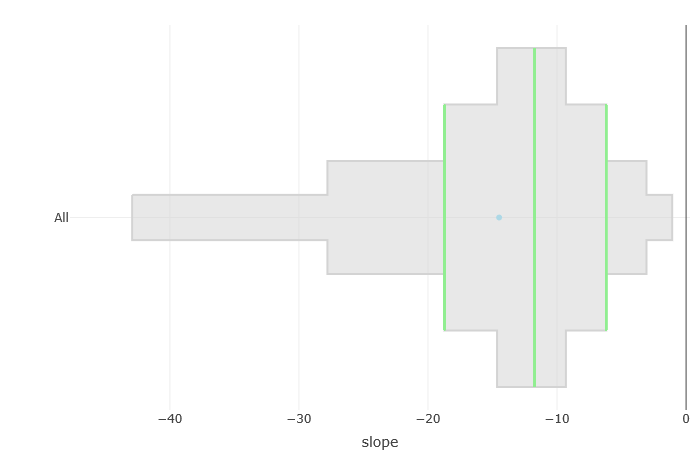Association Of Clinical Characteristics With Rate Of Kidney Transplant Function Decline In The 2 Years Prior To Allograft Loss
Vanderbilt University Medical Center, Nashville, TN
Meeting: 2019 American Transplant Congress
Abstract number: C70
Keywords: Graft failure, Kidney transplantation
Session Information
Session Name: Poster Session C: Kidney Complications: Late Graft Failure
Session Type: Poster Session
Date: Monday, June 3, 2019
Session Time: 6:00pm-7:00pm
 Presentation Time: 6:00pm-7:00pm
Presentation Time: 6:00pm-7:00pm
Location: Hall C & D
*Purpose: The rate of kidney transplant function decline prior to allograft loss has not been well characterized. Identifying demographic and clinical characteristics associated with slow or rapid decline in function prior to allograft loss may have important clinical implications.
*Methods: We retrospectively reviewed all patients with death-censored graft loss from January 2000 to June 2018 at a single center. We collected baseline (i.e., 2 years prior to graft loss) demographic and clinical characteristics via manual chart abstraction. All serum creatinine values were obtained for the 2 years prior to allograft loss and estimated glomerular filtration rates (eGFR) were calculated using CKD-EPI equation. A mixed effect model was used to calculate each patient’s betas for the relationship of time to failure and eGFR. We used linear regression to quantify the association between demographic and clinical characteristics with the slope of eGFR decline.
*Results: We identified 321 patients with death-censored graft loss. Baseline characteristics included: mean age 43.9±16.5 years, 41% female, 53% white, 98% not Hispanic/Latino, 23%, 15% and 3% with diabetes, coronary artery disease, and cerebrovascular disease (CVD), respectively, mean left ventricular ejection fraction (LVEF) 55.3±8.0%, 11% actively smoking, and 51% with Karnofsky score of 100. The mean±SD and median (25th, 75th percentile) eGFR slopes (in ml/min/1.73m2/year) were -14.49±13.24 and -11.73 (-18.72, -6.19), respectively.
After multivariable adjustment, female gender (β=-5.72, p=0.005), Hispanic/Latino ethnicity (β=-22.40, p<0.001), presence of CVD (β=-9.89, p=0.04), and lower LVEF (β=-2.9, p=0.02) were associated with a more rapid decline in eGFR.
*Conclusions: In patients with death censored graft loss, we identified characteristics that were associated with more rapid decline in kidney transplant function in the 2 years prior to failure. Investigating how these factors contribute to graft loss may increase our understanding of clinical outcomes following graft loss.
To cite this abstract in AMA style:
Binari LA, Thorne PE, Morse JL, Stewart TG, Forbes RC, Rabb K, Lipworth L, Abdel-Kader K, Concepcion BP. Association Of Clinical Characteristics With Rate Of Kidney Transplant Function Decline In The 2 Years Prior To Allograft Loss [abstract]. Am J Transplant. 2019; 19 (suppl 3). https://atcmeetingabstracts.com/abstract/association-of-clinical-characteristics-with-rate-of-kidney-transplant-function-decline-in-the-2-years-prior-to-allograft-loss/. Accessed December 18, 2025.« Back to 2019 American Transplant Congress

